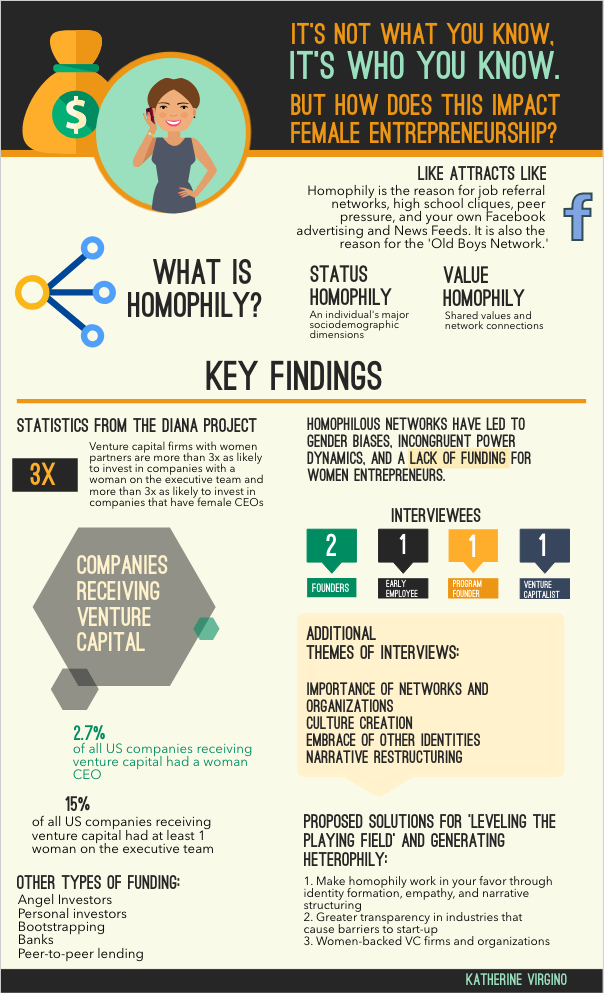Introduction to Study

A full version of this can be found here.
Within the past two decades, female entrepreneurship has skyrocketed. Innovations by female entrepreneurs – such as Birchbox’s subscription-based business mode and ClassPass’s no-commitment gym membership – have completely transformed entire markets and consumer buying behaviors. Endeavors like these require innovation, creative problem solving, and, the ability to break through the glass ceiling.
However, it is not quite broken yet. Although entrepreneurship seems like an individual endeavor, research shows that much of the success by female-led businesses depends greatly on social networks, which allow women to better shatter expectations together than alone. For women leaders especially, cultural circles allow for a space of community and group identity. Drawing upon homophily theory coined by sociologists Everett Rogers and Dilip Bhowmik, these networks comprise largely of individuals with social similarities, such as gender, race, religion, geographic location, or shared experiences. In merging aspects of both homophily theory and gendered behaviors in the workplace, a social network becomes a unique space for female empowerment. Nonetheless, this creation of such communities poses several questions, including: how do the relationships we form impact our sense of identity? Alternatively, do homophilous networks promote a cycle of ‘otherness,’ and is that not how females in the workplace were marginalized to begin with? How do marginalized groups gain traction through social networks? Should homophily be encouraged, and if so, to what end?
To answer these questions, I explore literature spanning several disciplines, including social network analysis, organizational behavior, and gender studies. As operationally defined for this project, a female is any individual who identifies as such – regardless of chromosome constitution or appearance. In my research, I intend to focus particularly on social capital and homophily theories along self-perception via Charles Cooley’s ‘looking-glass self.’ I argue that, due to their long-standing efficacy, homophilous networks and organizations drive success in the workplace, especially in the initial stages of opportunity identification and business establishment. Just as importantly, however, such groups must promote empathy toward additional aspects of their members’ intersectional identities, and therefore must offer environments for identity development based on shared and different characteristics. Finally, to supplement the theoretical elements of my project, I will examine the emergence of women’s entrepreneurship in New York via interviews with New York City-based female entrepreneurs and organization leaders.